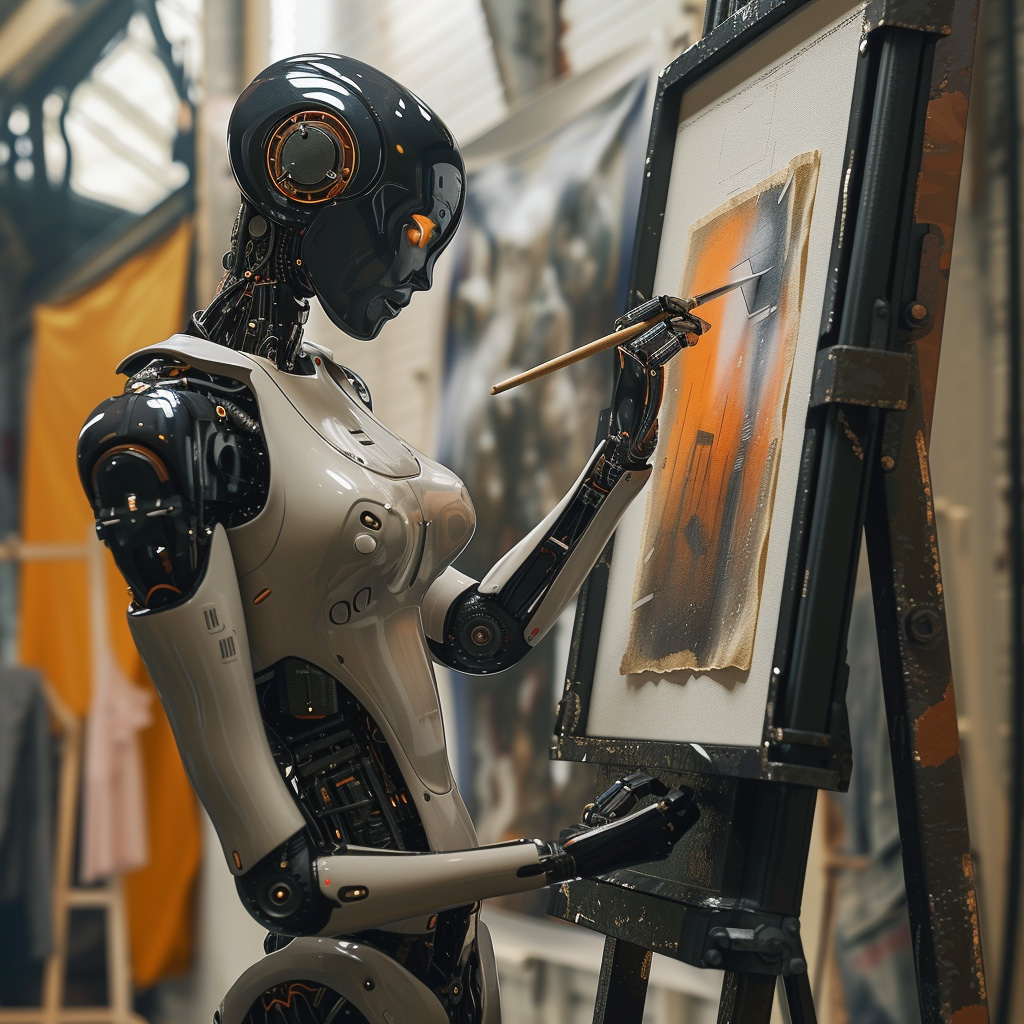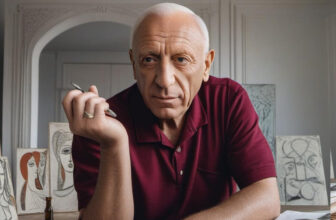
Unleashing Creativity: The Intersection of Artificial Intelligence and Art
Artificial intelligence (AI) is transforming the creative landscape in unprecedented ways, redefining the boundaries of artistic expression and challenging traditional notions of human ingenuity. As AI continues to evolve, its integration into the realm of art is both a testament to human innovation and a catalyst for new forms of creativity. This article explores the profound impact of AI on art, examining its innovative applications, societal effects, and the promising future it holds for artistic expression.
Innovative Applications:
AI’s foray into art is characterized by a diverse range of applications, spanning various mediums and genres. One of the most prominent examples is the use of generative adversarial networks (GANs) to create artwork. GANs employ a two-part neural network, wherein one generates new content and the other evaluates its authenticity. This dynamic interplay results in the creation of original artworks that blur the lines between human and machine creativity.
Furthermore, AI-driven tools like style transfer algorithms enable artists to manipulate and reinterpret existing artwork in novel ways. By analyzing the stylistic elements of a reference image and applying them to another, these algorithms facilitate the exploration of new aesthetic possibilities, giving rise to hybridized art forms that merge disparate influences seamlessly.
Moreover, AI-powered art installations and performances are captivating audiences worldwide with their immersive and interactive experiences. From AI-generated music compositions to real-time responsive visual displays, these installations push the boundaries of artistic expression, engaging viewers on both intellectual and emotional levels.
Here are some innovative applications of AI in the arts:
- Generative Art: AI algorithms, particularly generative adversarial networks (GANs), are being used to create original artworks. These algorithms generate new images, paintings, or sculptures based on large datasets of existing artwork, producing pieces that often surprise with their creativity and uniqueness.
- Style Transfer: AI-powered style transfer algorithms analyze the stylistic elements of one artwork and apply them to another, creating visually striking compositions. This technique allows artists to explore new aesthetic possibilities and create hybridized art forms that blend different artistic styles seamlessly.
- Interactive Installations: AI is enabling the creation of interactive art installations that respond to the presence or actions of viewers in real-time. By using computer vision and machine learning algorithms, these installations can adapt and evolve based on audience interaction, creating dynamic and immersive experiences.
- AI-Generated Music: AI algorithms are being used to compose music, analyze musical patterns, and even generate new musical compositions. From classical compositions to experimental electronic music, AI is pushing the boundaries of what is possible in music creation.
- Augmented Reality (AR) Art: AI-powered AR applications are allowing artists to overlay digital artwork onto the physical world, creating immersive and interactive experiences for viewers. These AR artworks can be experienced through smartphones or AR glasses, blurring the line between the virtual and physical realms.
- Data Visualization: AI algorithms are being used to analyze and interpret large datasets, turning complex data into visually engaging artworks. These data-driven visualizations can provide new insights into complex topics such as climate change, social dynamics, or scientific research.
- Art Restoration and Preservation: AI algorithms are being utilized to restore and preserve old artworks by automatically repairing damaged or deteriorated parts. These algorithms can analyze the original artwork, identify areas of damage, and generate realistic repairs, helping to preserve cultural heritage for future generations.
- Artistic Collaboration: AI tools are facilitating collaboration between artists and machines, enabling artists to explore new techniques and ideas. By leveraging AI algorithms, artists can experiment with new mediums, styles, and creative processes, leading to innovative and groundbreaking artwork.
These are just a few examples of how AI is revolutionizing the arts, pushing the boundaries of creativity and enabling new forms of artistic expression. As AI continues to evolve, its impact on the arts will only grow, opening up new possibilities for artists and audiences alike.
Societal Effects:
The integration of AI into art has profound societal implications, challenging conventional notions of authorship, creativity, and authenticity. One of the most contentious debates revolves around the role of AI in the creative process and its impact on the status of artists. Critics argue that AI-generated art diminishes the significance of human creativity, commodifying artistic expression and undermining the value of traditional craftsmanship.
Conversely, proponents view AI as a tool for democratizing creativity, empowering individuals from diverse backgrounds to participate in the artistic discourse. By lowering barriers to entry and fostering interdisciplinary collaboration, AI has the potential to foster a more inclusive and accessible art ecosystem, where innovation flourishes and diverse voices are amplified.
Moreover, AI-driven art has sparked philosophical inquiries into the nature of creativity and consciousness, prompting introspection about the essence of human identity in an increasingly technologically mediated world. As AI continues to push the boundaries of artistic possibility, society grapples with fundamental questions about the intersection of technology, ethics, and artistic expression.
Importance of Artificial Intelligence in visual art and artist
Artificial intelligence (AI) has the potential to significantly improve and assist visual arts, artists, and visual representation in several ways:
- Enhanced Creativity: AI algorithms, such as generative adversarial networks (GANs) and style transfer, can inspire and augment artistic creativity. Artists can use AI-generated images as references or inspiration, explore new aesthetic styles, and experiment with novel artistic techniques that may not have been possible before.
- Efficient Content Creation: AI tools can streamline the process of creating visual content by automating repetitive tasks and generating preliminary sketches or drafts. This allows artists to focus more on the conceptualization and refinement of their ideas, speeding up the creative workflow and increasing productivity.
- Augmented Artistic Skills: AI-driven software can act as virtual assistants, providing artists with real-time feedback, suggestions, and insights to improve their artistic skills. For example, AI-powered drawing applications can offer guidance on anatomy, perspective, and composition, helping artists refine their techniques and hone their craft.
- Personalized Art Experiences: AI algorithms can analyze user preferences, behavior, and demographics to personalize visual art experiences. This could include recommending artworks tailored to individual tastes, creating customized art installations or exhibitions, or even generating personalized artworks based on user input or data.
- Artistic Collaboration: AI enables collaborative opportunities between artists and machines, fostering interdisciplinary creativity and innovation. Artists can collaborate with AI algorithms to explore new mediums, techniques, and creative processes, leading to the development of groundbreaking artworks that merge human ingenuity with machine intelligence.
- Art Restoration and Conservation: AI algorithms can assist in the restoration and conservation of historical artworks by automatically identifying and repairing damage, restoring faded colors, and preserving fragile materials. This helps to protect cultural heritage for future generations and ensures that important artworks remain accessible to the public.
- Accessible Art Education: AI-powered educational tools and resources can democratize access to art education by providing affordable and accessible learning opportunities to aspiring artists worldwide. These tools can offer interactive tutorials, virtual workshops, and personalized feedback to help individuals develop their artistic skills and unlock their creative potential.
- Data Visualization and Interpretation: AI algorithms can analyze and interpret large datasets to create visually engaging and informative data visualizations. Artists can use these visualizations to communicate complex ideas, trends, and patterns in a compelling and accessible manner, bridging the gap between art and science and raising awareness about important social, environmental, and scientific issues.
Future Outlook:
Looking ahead, the future of AI in art holds boundless potential, promising to revolutionize the way we create, consume, and interact with artistic content. As AI algorithms become more sophisticated and adaptable, they will enable artists to push the boundaries of their imagination, transcending traditional constraints and unlocking new avenues of expression.
Furthermore, AI-powered tools will continue to enhance the creative process, providing artists with unparalleled insights and capabilities to realize their vision. Whether through the synthesis of disparate influences, the exploration of emergent patterns, or the augmentation of human abilities, AI will serve as a catalyst for innovation, pushing the boundaries of artistic possibility to new heights.
Additionally, AI-driven art is poised to redefine the relationship between artist and audience, fostering dynamic interactions and immersive experiences that transcend conventional modes of engagement. From participatory installations to personalized artworks tailored to individual preferences, AI will enable a deeper sense of connection and engagement, blurring the lines between creator and spectator.
The integration of AI into art represents a paradigm shift in the creative landscape, ushering in a new era of innovation, experimentation, and exploration. While the societal implications are complex and multifaceted, the transformative potential of AI in art is undeniable. By harnessing the power of technology to augment human creativity, we stand poised on the brink of a renaissance in artistic expression, where the boundaries between the possible and the impossible blur, and the imagination knows no limits.





